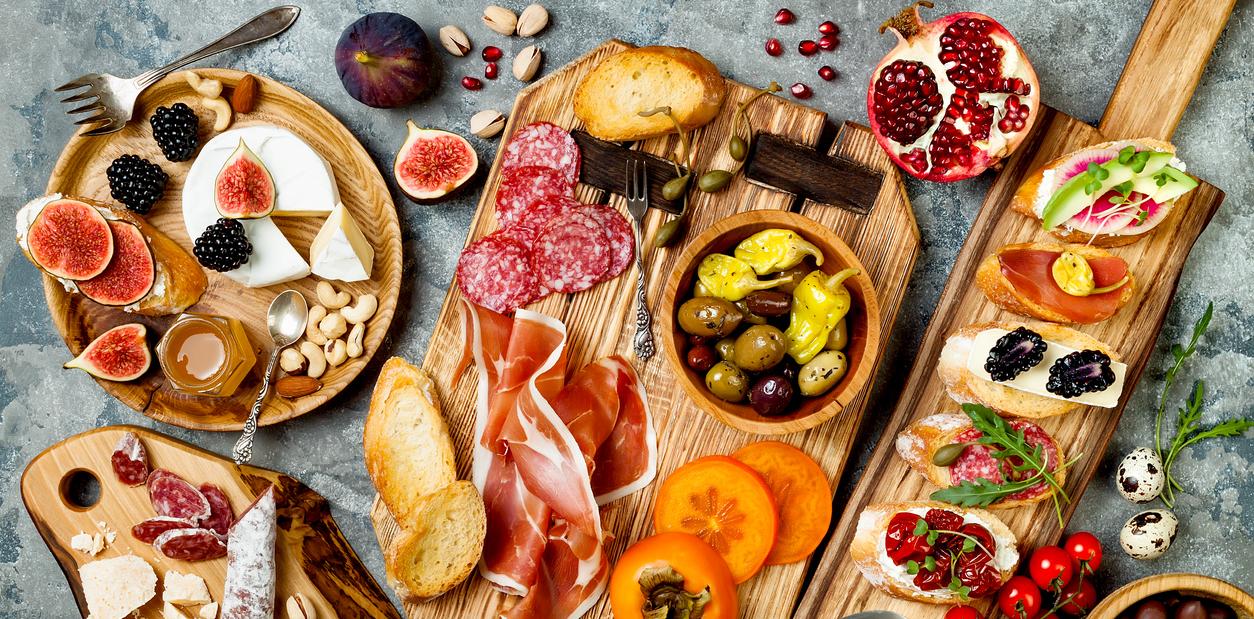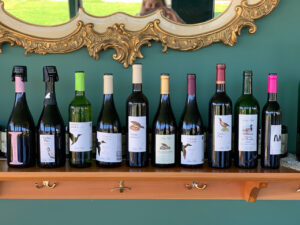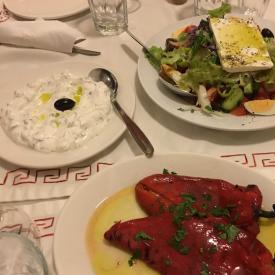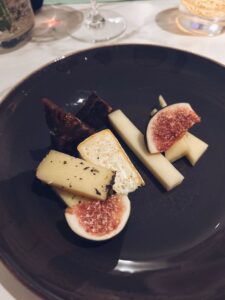
Even though, in this unusual year, you are probably not hosting holiday parties or large family gatherings, there is every reason to treat yourself to mouth-watering Mediterranean appetizers and drinks during the holiday season (or any season, for that matter!)
These words all sound alike. What are we talking about when we say Appetizers, Aperitifs, and Aperitivos?
Mediterranean appetizers are usually small plates of food. In Portugal and Spain, they’re called tapas or pintxos, the latter which hail from the Basque and Catalan regions of Spain; antipasti or cicchetti in Italy; hors d’oeuvres in France; mezethes in Greece; or meze in Turkey, Lebanon, and other countries of the Eastern Mediterranean. Typically, these are small bites that feature vegetables, whole grains, fish, legumes, nuts, and/or seeds.
Aperitifs and Aperitivos are small alcoholic drinks taken to stimulate or open the appetite before a meal. Although the words are French and Italian, there are similar drinks throughout the Mediterranean, where alcohol consumption is not avoided for religious reasons.
Taking a quick trip around the Mediterranean, here are some classics for your holiday Mediterranean appetizers, inspired by culinary travels—our Oldways Culinarias throughout the Mediterranean.

Grilled Sardines, Caldo Verde Soup, Bacalhau or codfish are perfect for meeting a friend by the Douro River in Porto, Portugal or sitting at a bar in the Alfama in Lisbon. Pair these with a Porto Tonico, a drink of white port wine and tonic water.
If you are tapas hopping in Barcelona or Madrid, Spain, you might come upon these classics: Garlicky shrimp in olive oil, Tortilla Espanola, or Salmorejo, a cold tomato soup. To quench your thirst, a glass of cava, a white or rose sparkling Spanish wine will hit the spot.
The French Mediterranean, stretching from the border of Spain to the border with Italy, has some wonderful ways to start a meal Try a Pissaladière, bread topped with caramelized onions and olives, or small toasts topped with grilled eggplant or Tapenade, a dip of capers, olives and anchovies. A cold, crisp Provencal rosé wine is a perfect accompanying aperitif.

Restauraunt in Venice
A selection from north to south in Italy: In Venice, famous for cicchetti bars or bacari (you could call them appetizer bars!), try frittura mista or frito misto, which is a mixture of fried vegetables and fish (calamari and sardines). Farther south in Tuscany and Rome, or for that matter throughout Italy, bruschetta with a variety of toppings is a favorite starter, as is Bagna Cauda, a simple appetizer of seasonal vegetables served with a dip of anchovies, garlic and extra virgin olive oil. Much farther south, Sicily is famous for arancini, basically a ball of rice, most commonly filled with ragu or mozzarella or ham or peas, then coated with bread crumbs and fried.
Italian aperitivos are many. For many, happy hour doesn’t begin without the classic Italian sparkling wine Prosecco— light, bubbly and fun. Currently, the Aperol Spritz and the Negroni are very popular drinks, mixing an alcoholic liqueur (Aperol or Campari) with other ingredients. An Aperol Spritz is made by combining the liqueur Aperol with Prosecco and club soda. A Negroni is equal parts Campari, gin and sweet red vermouth.
In Greece, you can find Dakos, a barley rusk with tomatoes, feta and extra virgin olive oil, almost everywhere, and it is very easy to replicate at home. Similarly, the yogurt, cucumber and garlic dip, Tzatziki is already on grocery store shelves from Maine to California. Serve it with pita bread, crudite or crackers for a fast and easy appetizer. Also well known is Spanakopita, spinach hand pies, or hortopita, horta (mixed greens) combined with herbs and feta and wrapped in phyllo— a staple throughout Greece. For a different take, try Aglaia Kremezi’s Greek Pie in a Skillet. While there are many wonderful Greek wines perfect for serving with appetizers, the classic Greek aperitivo is ouzo, an anise-flavored liqueur. Ouzo is best enjoyed by mixing ouzo with ice or cold water, becoming cloudy as the ouzo reacts with the ice or water.
Turkey has a similar aperitivo, also an anise-flavored liqueur. Raki is sometimes called Lion’s Milk, and is made of twice-distilled grapes and aniseed. Drink raki slowly, perhaps mixing it with water, and be sure to enjoy it with food (and friends!). Cheese and melon are traditional as are large numbers of meze dishes, including dolmas and sarmas, stuffed and rolled grape or cabbage leaves.

Tzatziki, Peppers and Greek Salad
In the Eastern Mediterranean countries, leblebi, or what we know as roasted chickpeas, is a common snack. Simply toss canned or otherwise cooked chickpeas with olive oil and spices, spread them out on a sheet pan, and roast in the oven until crispy for a delicious and healthy snack. Baba ganoush is a smoky, smooth, creamy eggplant dip. The key to achieving that smokiness, the hallmark of a memorable baba ganoush, is to literally char the skin off the eggplant. Although the skin is discarded, the process of charring the skin infuses the flesh of the eggplant with a wonderful smoky aroma. The eggplant is then combined with olive oil, tahini, garlic, lemon, parsley, and salt.
Whether Greek, French, Italian, Spanish or Eastern Mediterranean, one of the simplest ways to prepare a Mediterranean appetizer is the antipasti plate. Creating an antipasti plate or platter is simply a matter of assembling quality ingredients from that country: olives, marinated or pickled vegetables, traditional cheeses, breads, nuts, beans, and creamy dips like hummus, tzatziki, tapenade, or pesto. Although the food itself is already beautiful, it can be made to look even more attractive by artful arrangements on plates, platters or a board, decorated with flowers or leaves and special table linens.
 Traditional cheeses can be added to the antipasti platter or can be the star of the show, at the center of the plate! To create a traditional cheese plate, you can focus on one country or region, or on a variety of styles of cheese— a soft cheese, an Alpine-style cheese, a hard cheese and even a blue cheese— accompanied by condiments such as traditional balsamic vinegar, fruit spreads, mustard or honey. To get advice on creating a cheese plate, subscribe to Oldways Cheese Coalition’s monthly newsletter, The Cheese Plate. To get immediate advice for this year’s holiday, check out back issues of the newsletter, or read a blog from the Director of the Oldways Cheese Coalition, How to Build the Perfect Cheese Platter.
Traditional cheeses can be added to the antipasti platter or can be the star of the show, at the center of the plate! To create a traditional cheese plate, you can focus on one country or region, or on a variety of styles of cheese— a soft cheese, an Alpine-style cheese, a hard cheese and even a blue cheese— accompanied by condiments such as traditional balsamic vinegar, fruit spreads, mustard or honey. To get advice on creating a cheese plate, subscribe to Oldways Cheese Coalition’s monthly newsletter, The Cheese Plate. To get immediate advice for this year’s holiday, check out back issues of the newsletter, or read a blog from the Director of the Oldways Cheese Coalition, How to Build the Perfect Cheese Platter.
We hope this takes you to a new Mediterranean level of pre-meal holiday celebrations. Remember, while it is a time of celebration, and it is also smart to think of quality over quantity. Enjoy everything, just not too much! For more ideas, search our Oldways recipes.
For more inspiration, take a look at our upcoming Oldways Culinarias. With some light at the end of the tunnel now, we are planning for a Culinaria in Naples + Amalfi on October 17-24, 2021 and in Portugal on April 3-10, 2022.
Closer to home, sign up for the January Challenge – a Mediterranean Staycation!
Happy Holidays and Cheers from all of us at Oldways!
Want biweekly Med Diet information and recipes in your Inbox? Sign up for our Fresh Fridays newsletter by clicking the Subscribe button at the bottom of this page!
Join the Make Every Day Mediterranean Club Facebook group for additional information and support.




Leave a comment